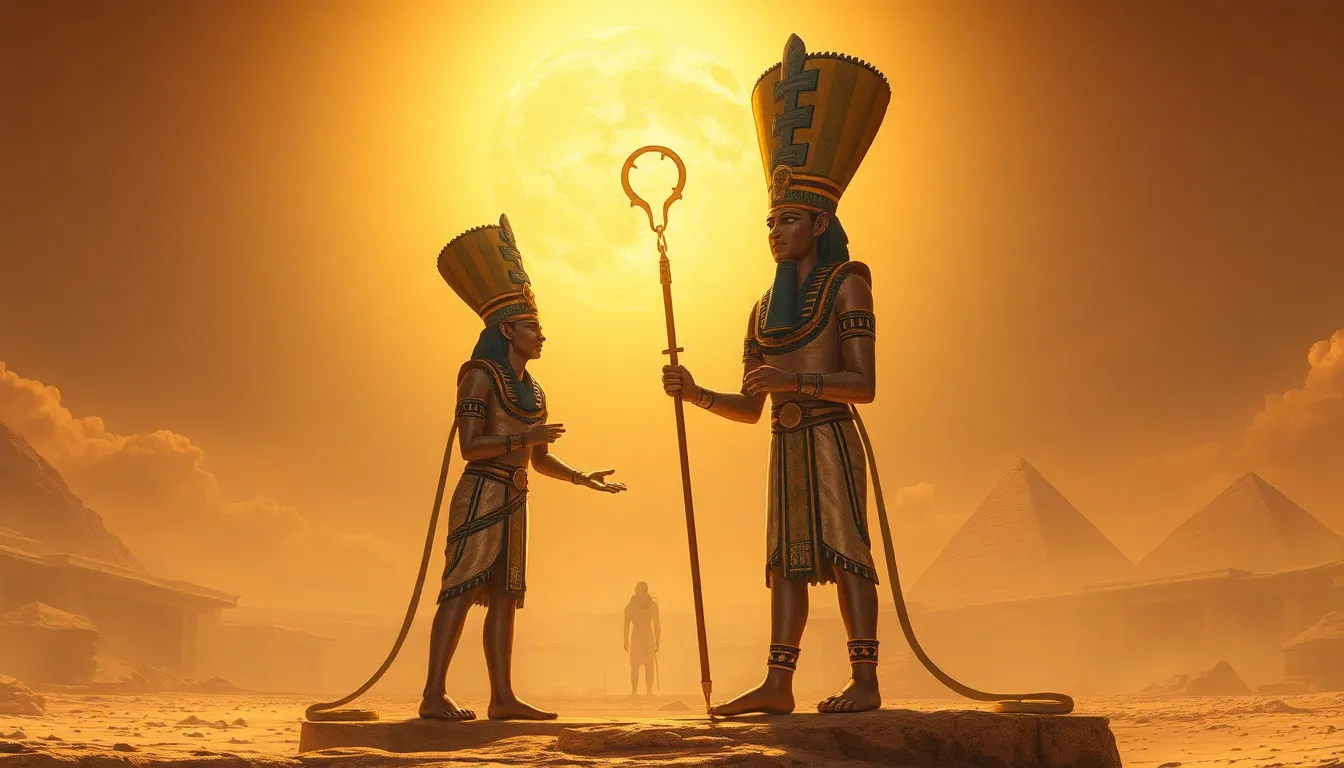The Role of Festivals in Ancient Egyptian Spirituality
I. Introduction
Festivals in ancient Egypt were grand celebrations that intertwined religious devotion with communal joy. These events were not just occasions for merriment; they were deeply rooted in the spiritual fabric of Egyptian society. Spirituality played a pivotal role in ancient Egyptian culture, influencing their daily lives, governance, and societal structures. The purpose of this article is to explore the various dimensions of festivals in ancient Egypt, highlighting their significance in spirituality, community, and culture.
II. Historical Context of Ancient Egyptian Festivals
The origins of festivals in ancient Egypt can be traced back to the early dynastic periods, evolving over centuries to incorporate diverse religious practices and cultural influences. Key historical points include:
- Predynastic festivals celebrated agricultural cycles.
- The Old Kingdom (c. 2686–2181 BCE) saw the formalization of many religious festivals.
- The Middle Kingdom (c. 2055–1650 BCE) marked the expansion of festivals to include more communal aspects.
- The New Kingdom (c. 1550–1070 BCE) was characterized by elaborate state-sponsored festivals.
Major festivals celebrated throughout different dynasties included the Opet Festival, the Wepet-Renpet, and the Khoiak Festival, each with its own unique rituals and significance.
III. Spiritual Significance of Festivals
Festivals served as a bridge connecting the earthly realm with the divine. They were vital in the following ways:
- Connection between festivals and the gods: Festivals were dedicated to specific deities, serving as a means to honor and communicate with them.
- Role of festivals in honoring deities and spirits: Rituals performed during festivals aimed to appease gods and spirits, ensuring their favor and blessings.
- Seeking divine favor and protection: Participants often sought protection, health, and prosperity through dedicated offerings and prayers during these events.
IV. Major Festivals and Their Rituals
Several major festivals highlight the spiritual devotion of the ancient Egyptians, including:
A. The Opet Festival: Celebrating the god Amun
The Opet Festival was one of the most significant religious celebrations, held annually in Thebes. It involved a grand procession of the statue of Amun from Karnak to Luxor, symbolizing the rejuvenation of the king and the fertility of the land. Rituals included music, dancing, and offerings.
B. The Wepet-Renpet: New Year Festival
The New Year Festival, known as Wepet-Renpet, marked the beginning of the Egyptian calendar. It celebrated the rebirth of nature and the Nile’s annual flooding. People engaged in feasting, rituals, and decorated their homes with flowers and greenery.
C. The Khoiak Festival: The resurrection of Osiris
The Khoiak Festival commemorated the death and resurrection of Osiris, the god of the afterlife. It included dramatic reenactments, rituals to honor Osiris, and the preparation of Osiris’ tomb. This festival emphasized themes of death, rebirth, and the cycle of nature.
V. Social and Community Aspects of Festivals
Festivals were not just religious events; they were significant social gatherings that fostered community spirit. Key aspects include:
- Communal gatherings: Festivals brought together people from various walks of life, promoting unity and shared cultural identity.
- Strengthening social bonds: Participating in festivals helped strengthen relationships among community members, families, and social groups.
- Inclusion of various social classes: While some festivals were state-sponsored, many festivals welcomed participation from all social classes, ensuring a sense of belonging and shared experience.
VI. Festivals and Agricultural Cycles
Festivals were intrinsically linked to the agricultural calendar. This connection is evident in various aspects:
- Seasonal changes: Many festivals were celebrated in accordance with the Nile’s flooding, marking the agricultural year.
- Celebration of harvests and fertility: Festivals like the Wepet-Renpet celebrated the bounty of the land and the fertility of crops.
- Agricultural deities: Deities associated with agriculture, such as Osiris and Hathor, were central figures during these celebrations, reinforcing the connection between spirituality and sustenance.
VII. Artistic and Cultural Expression During Festivals
The artistic expressions observed during festivals played a significant role in enhancing the spiritual experience. This included:
- Music, dance, and performance: Festivals featured extensive performances, including music and dance, which served as expressions of joy and devotion.
- Symbolism in decorations and attire: Participants adorned themselves in elaborate costumes and decorations, rich in symbolism that reflected the themes of the festival.
- The role of art: Artworks created for festivals, from sculptures to paintings, contributed to a vibrant atmosphere, deepening the spiritual experience.
VIII. Conclusion
In summary, festivals in ancient Egypt were vital components of spirituality, community, and culture. They served to connect the people with their gods, celebrate agricultural cycles, and reinforce social bonds. The traditions established during these festivals have left a lasting impact on Egyptian heritage. Understanding these ancient practices provides valuable insights into how spirituality and culture can thrive together, and offers reflections on the relevance of these traditions in contemporary spirituality and cultural expressions around the world.




